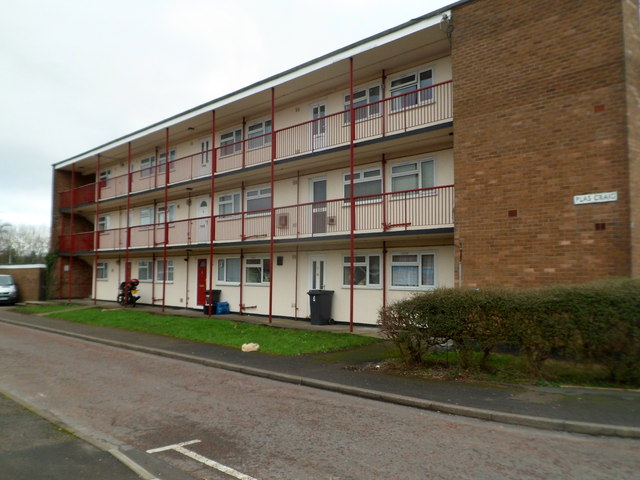Welsh location appears in ‘Best New Towns’ list

In an attempt to solve the housing crisis, ‘new towns’ are among the promises offered from Labour should they win the next Election.
With new towns back in the headlines, the Telegraph has created a top ten of those built after the Second World War, hailing one Welsh location ‘worth a weekend away’.
In an article written by ‘destination expert’ Chris Moss, the Telegraphy outlines Angela Rayner’s plans to build 1.5 million homes across the UK in Labour’s first five years, exploring previous ‘waves’ of new town building, beginning with the post-war Labour government’s aim to deal with overcrowding in London and other big cities, with 32 being built over three phases.

According to Moss: “The first wave, built between 1947 and 1950, focused on the South East. Ten were created, including Harlow, Stevenage and Welwyn Garden City, whose name recalls the “garden city” schemes of the Twenties, which in turn were influenced by earlier utopian workers’ villages such as Saltaire and Bournville.
From 1961 to 1964 came the ‘second wave’ with the creation of new towns in Skelmersdale and Runcorn to help deal with with Liverpool’s overcrowding, and in Redditch and Dawley in Shropshire to alleviate pressure on the West Midlands.
A third wave was less successful, but helped birth towns such as Milton Keynes – and things stalled with criticisms over build quality and surrounding infrastructure.
Welsh utopia
Before listing his ‘top ten’, Moss shares how many of these schemes “that were once considered futuristic and utopian” are now approaching their 80th birthday.
Moss ranked ten towns from worst to best to visit “if you want to go back to the future, as imagined by post-war Britain”.
Coming in at number 8, and the only Welsh feature on the list, is Cwmbran in Torfaen.

Titling the feature, “Where the future was happening then,” Moss writes: “In the case of the only Mark 1 new town in Wales, an area of 3,160 acres surrounding the village of Cwmbran was to be “Where the Future is Happening Now”, a model mini-city with a central shopping and civic area surrounded by residential neighbourhoods and zoned industrial areas.
“Each neighbourhood would have around 5,000 residents and its own core of shops, schools, health centres, community halls and places of worship.”
Award winning
The article shares that: “The early stages were not without their problems; aesthetics were sidelined to meet the fast pace of development.
“The one standout Modernist building is the concrete mural-clad lift shaft at Monmouth Square, built by William Mitchell, with a block of “luxury flats” looming over it.
“The contemporary mono-pitched housing in Coed Eva, which won awards at the time, became unfashionable here as elsewhere.
“As the town developed, its projected size had to increase and many of the original ideals were diluted. Cwmbran today has a population of more than 48,000 – making it the sixth-largest urban area in Wales – and a solid manufacturing base.
“It’s neither pretty nor visionary, but shows how new town attention gave birth to a relatively prosperous new centre.
“The only structure listed by Cadw, the historic environment service of the Welsh Government, is a sign for the industrial estate. Heritage is not Cwmbran’s chief concern.”
Read the article in full, and find out the new towns from Scotland and England that complete the rest of the top ten here.
Support our Nation today
For the price of a cup of coffee a month you can help us create an independent, not-for-profit, national news service for the people of Wales, by the people of Wales.








Moss is wrong.
Welwyn Garden City was started in 1920, not after WW2. It is still today held up internationally as a positive example of urban development. Having lived there, I would say that it is a very pleasant place to live: the later “new town” (as opposed to “garden city”) developments of Harlow and Stevenage are retrograde steps in my view.
You are correct that Welwyn Garden City was started in 1920, but it was subsequently incorporated into the New Town programme after the War along with Hatfield.
Cwmbran is fine, but nothing remarkable. Maybe that’s a good thing, it just works as a town.
Newtown in Powys, enlarged under the same programme seems a nice enough place.
When the Cwmbran development corporation were still in place their promotional spiel was “Cwmbran garden city of Wales”. That was dropped around the time the development corporation was wound up. I’m sure I read somewhere that budding architects were invited to submit their ideas for the housing estates & that’s the reason Cwmbran has such a variation of dwellings, some good some bad depending on an individual’s perspective. Same as the tower block, some say iconic, some describe it as looking like a filing cabinet with an ink pot on top . As for the heritage angle, well, the remit of… Read more »
. As for the heritage angle, well, the remit of… Read more »
The New Towns as a concept weren’t perfect but by and large were successful. A TV programme written and presented by Colin Ward deals with their successes and their relative failings as they stood in 1979. The map near the beginning of the programme shows three new towns in Wales, the other being Llantrisant, which in the end was never developed.
In 1979 they were largely doing well, but Thatcher hated them as a concept so they got curtailed.